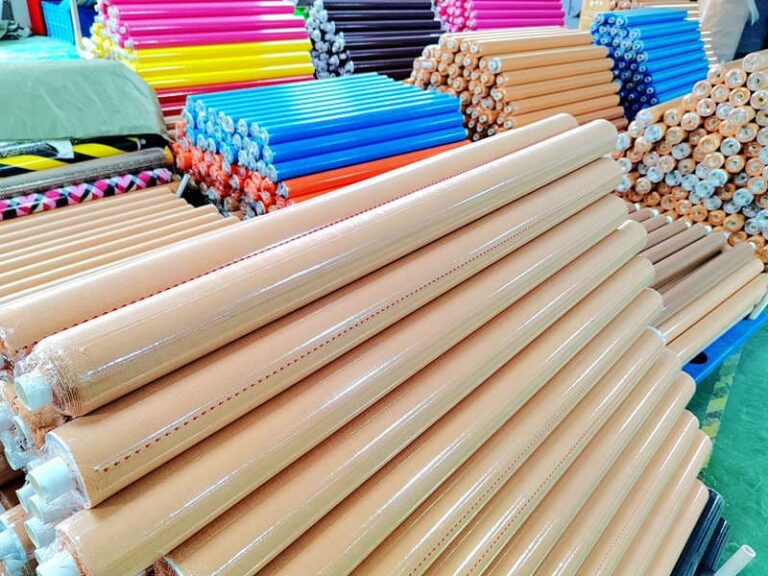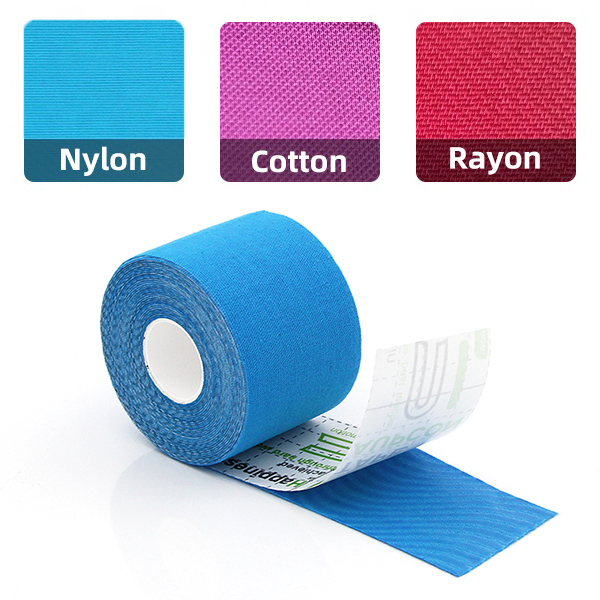Knee tape was originally called cotton kinesiology tape, and knee tape is just a name derived from its different uses. In addition to knee tape, it can also be called wrist tape, ankle tape, shoulder tape, etc.
Kinesiology tape is an elastic sports tape that can be used on any joint in the body, from knees and shoulders to fingers and toes, and there are suitable sizes, but the most commonly used is knee tape.
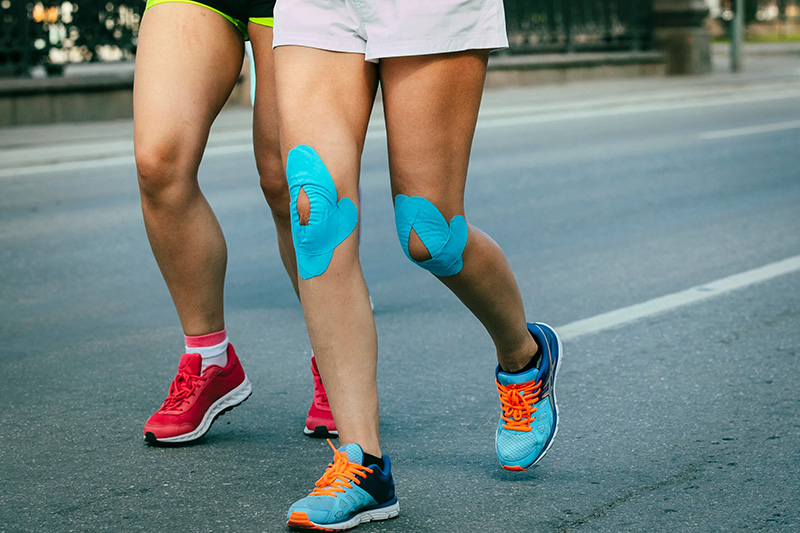
What are the most common knee injuries?
As the largest joint in the human body, the knee joint is also one of the most vulnerable parts. The most common knee injuries are:
Anterior cruciate ligament (ACL) injury: ACL injury is a common knee problem for athletes. Knee Tape can provide additional support and reduce knee instability.
Patellofemoral pain syndrome (PFPS): commonly known as “runner’s knee”, the runner knee tape can help adjust the position of the patella and reduce pain.
Medial collateral ligament (MCL) injury: used kinesiology tape for medial knee pain to protect the medial ligament of the knee and reduce pressure during exercise.
Patellar tendinitis (Jumper’s Knee): Common in jumping athletes, Knee Tape can relieve the pressure on the patellar tendon.
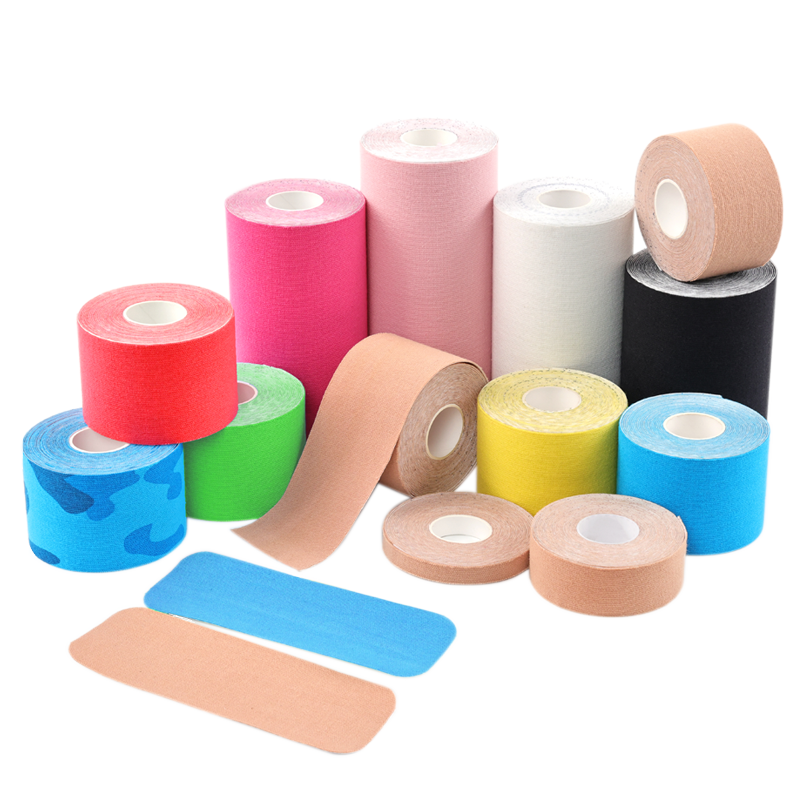
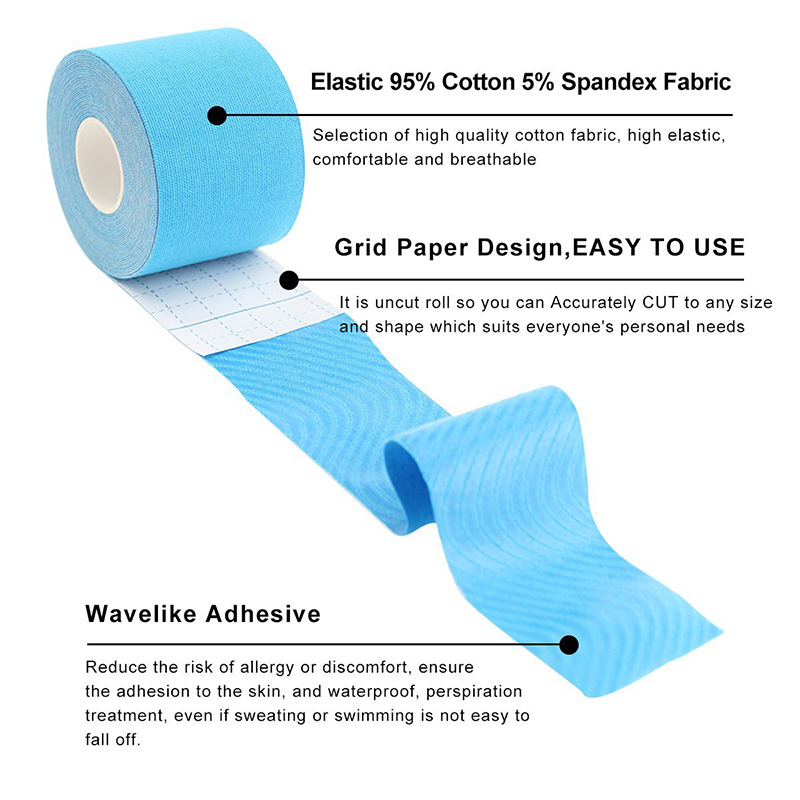
What sports can knee tape be used for?
Basketball players: Frequent take-offs, sudden stops, and changes of direction in basketball have a great impact on the knees. Knee Tape can be used to support the patella, reduce patellar strain, and prevent or relieve jumper’s knee.
Football players: Football players have more inversion, valgus, and rotation movements of the knee joints. Knee Tape can be used to stabilize the knee ligaments, prevent meniscus injuries, and relieve muscle fatigue.
Runners & marathon runners: Long-distance running causes greater wear and tear on the knee joints. Knee Tape can be used to relieve the pain caused by runner’s knee and ITB friction syndrome (iliotibial band syndrome) and provide continuous support.
Volleyball players: Volleyball players often jump and land. Knee Tape can effectively support the knees, reduce the impact of jumping on the knee joints, and prevent patellar tendinitis.
In addition to these, kinesiology tape is also widely used in sports that have high requirements for knee joints, such as tennis, badminton, rugby, weightlifting, gymnastics, skiing, mountaineering, and CrossFit, to protect athletes’ knees so that they can perform at their best level.
Widely used in international events
At the quadrennial Olympic Games, we often see many top athletes wearing colorful kinesiology tape. This is not because they are injured, but their protective measures.
In addition to supporting joints, it can also relieve pain. At the same time, the bright colors have a strong recognition, allowing fans to find him in the crowd at a glance.
Where can I buy Knee Tape?
Online e-commerce platforms: Amazon, Temu, eBay, and other large e-commerce platforms
Professional medical equipment stores: Many pharmacies or medical equipment stores also provide Knee Tape products.
Sporting goods stores: Large sporting goods chains such as Decathlon usually also sell kinesiology tape.
Large supermarkets: Walmart, Sam’s Club, etc.
Rehabilitation clinics or physical therapy centers: Professional rehabilitation institutions will also recommend and sell Knee Tape suitable for patients.
In addition, you can also buy directly from kinesiology tape manufacturers, such as China’s leading suppliers WEMADE and Aupcon. There are no middlemen to make a profit, and the manufacturer sells directly, the price is cheaper, and it is more friendly for long-term users.
Whether you are a professional athlete or a fitness enthusiast, knee tape can be a valuable protection tool for your knees. Choose the right brand and kinesiology tape to make your exercise safer and more efficient!

